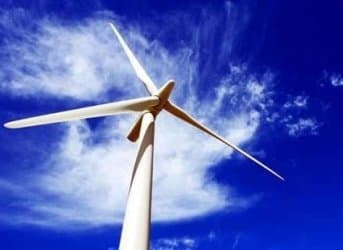Today I begin a series that looks at the recently released 2013 BP Statistical Review of World Energy. Because the past two posts have dealt with the Keystone XL pipeline project, I thought it would be a good change of pace to kick off this series by looking at the current global picture of renewable energy. Additional articles in the series will examine the world’s fossil fuel consumption and carbon emissions.
Overall, renewable energy once more displayed very strong growth in 2012. Renewable energy accounted for 2.4% of global energy consumption in 2012, and a record 4.7% of global power generation.
The only renewable energy sector that stagnated in 2012 was the production of biofuels. For the first time since 2000, global biofuels production declined. This decline was primarily a result of a 4.3% drop in the production of biofuels in the US (but I expect production will be higher for 2013).

Related articles: Scientists Produce Cheap Hydrogen from Rust and Sunlight
Renewable power generation was up 15.2% in 2012, slightly lower than in previous years but still higher than the long-term historical average. Wind energy provided most of the growth, with China leading the pack with an increase of 34.6% over 2011. The strongest rate of growth was seen in solar power generation, which increased by 58% over 2011.

Whenever I analyze data, I strive to look at it in a unique way. Ideally, I like to highlight items that didn’t make the press releases. I thought it would be interesting to look at the evolution of the capacity factors for some of the different renewable options as more capacity has been installed. The capacity factor is simply the amount of power produced divided by the power that would be produced if the power source was producing at full capacity at all times.

Related articles: Supply Policies Prevent Hydropower from Fulfilling its Potential
My working hypothesis was that as this rapid build-out of wind and solar was taking place, site selection would have moved on from the most optimal sites and therefore the capacity factors would be falling over time. But they have actually been fairly consistent over the past decade, with the capacity factor for solar PV rising for the past two years. Since 1996, the average annual capacity factor is 9.7% for solar PV and 19.4% for wind power. As I wrote previously in The Key to Running the World on Solar and Wind Power, these capacity factors are screaming for a power storage solution.
Conclusions
With the exception of biofuels, renewable energy made strong gains once more in 2012, continuing the strong growth rate from the previous decade. Biofuels took a step back, particularly in the US, as the expiration of the major corn ethanol tax credit at the end of 2011 negatively impacted ethanol producers. 2013 will be a challenging year as well as the industry grapples with saturating the gasoline pool with 10% ethanol (the blend wall). However, I expect biofuel production in 2013 to be somewhat higher than 2012′s production, and for strong growth in the production of power from wind and solar PV to continue.
By. Robert Rapier



















The good comparator between the unreliable sources (W&S) and the dispatchable sources (most anything else) is Capacity Credit. CC is the percentage of the nameplate power that can reliably be credited as part of power reserve stock. In other words, if you put in 100MW nameplate wind source, how much gas or coal fired POWER capacity can you mothball. Without "statistical manipulation", the numbers I have seen are in the 1% range.